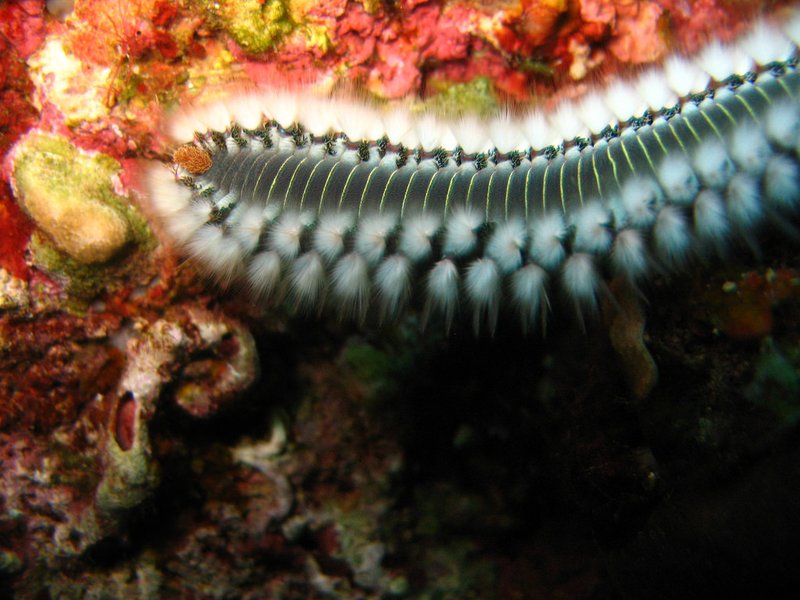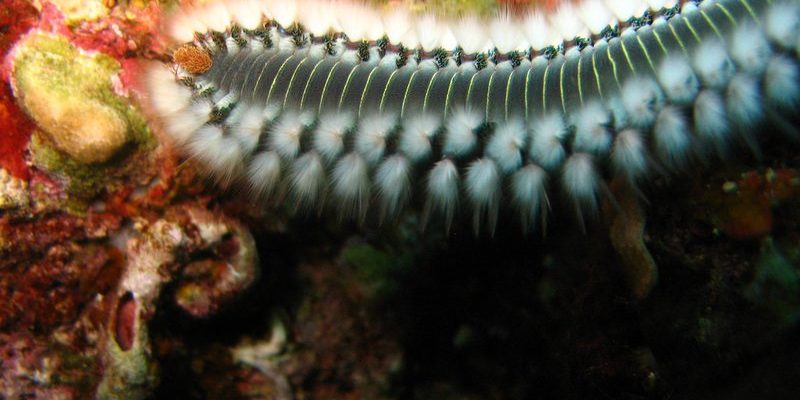
Marine polychaetes are a group of segmented worms that play significant roles in marine ecosystems. They’re not just any worms; they’re incredibly diverse, showcasing unique adaptations that help them thrive in various habitats. Whether you’re walking along a beach or diving into deeper waters, you might just cross paths with these intriguing critters. Let’s take a closer look at what makes polychaetes so special and essential to our oceans.
What Are Marine Polychaetes?
Marine polychaetes belong to the class Polychaeta within the phylum Annelida, which includes all segmented worms. These worms are primarily marine dwellers, living in environments ranging from tidal pools to the deep sea. The name “polychaete” translates to “many bristles” in Greek, referring to the numerous bristle-like structures known as *chaetae* that they have on their bodies. These bristles help them in locomotion and anchoring themselves within their habitats.
There are over 10,000 identified species of polychaetes, showcasing remarkable diversity in size, shape, and color. Some are as small as a few millimeters, while others can grow over three feet long! They come in an array of forms, from the tube-dwelling species that construct protective homes from sand and debris to predatory polychaetes that actively hunt for prey.
The Anatomy of a Marine Polychaete
Let’s break down the anatomy of marine polychaetes because understanding their structure helps grasp their fascinating lifestyles.
Body Structure: Polychaetes typically have a long, segmented body divided into two main parts: the prostomium (the head) and the pygidium (the tail). The prostomium often features sensory organs, like eyes and antennae, that help these worms navigate their environments.
Chaetae: One of the most distinctive features is their chaetae. These bristle-like structures come in various forms, from simple to elaborate. Some chaetae are used for swimming, while others help them cling to surfaces and defend against predators.
Gills: Many marine polychaetes have gills located on their segments. These feathery appendages not only aid in respiration but also enhance their ability to move through water, giving them a more streamlined shape.
Habitat and Distribution
Marine polychaetes inhabit an impressive range of environments. You might find them in shallow coastal waters, mud flats, rocky substrates, coral reefs, and even in the deep sea, where they thrive in extreme conditions.
Shallow Waters: In tidal pools, polychaetes can be seen burrowing into the sand or hiding under rocks. These environments offer rich food sources, from detritus to microscopic organisms.
Deep Sea: In deeper waters, polychaetes often adapt to survive in extreme pressure and cold temperatures. Some species construct elaborate tubes from minerals found in their environment, creating homes that attract other marine life.
Coral Reefs: Within coral reefs, polychaetes play a crucial role in the ecosystem. They contribute to the nutrient cycle by breaking down organic matter and providing food for larger predators, making them key players in maintaining the health of these vibrant ecosystems.
Feeding and Diet
You might wonder how these little worms get their meals. Marine polychaetes have a variety of feeding strategies, reflecting their diverse lifestyles.
Filter Feeding: Some species, like the feather duster worm, are filter feeders. They use their gills to capture tiny particles floating in the water, such as plankton, and bring them into their mouths.
Predation: Others are more adventurous, hunting down prey like small fish and crustaceans. These polychaetes have developed strong jaws and sometimes even venom to subdue their meals.
Detritivores: Many polychaetes are detritivores, meaning they feed on decomposing organic matter. This diet is vital because it helps recycle nutrients back into the ecosystem, supporting plant and animal life.
Reproduction and Life Cycle
Marine polychaetes have a fascinating reproductive process, often differing by species.
Asexual Reproduction: Some polychaetes can reproduce asexually by a process called fragmentation, where a piece of the worm breaks off and develops into a new individual.
Sexual Reproduction: Others undergo sexual reproduction, which usually involves the production of gametes. Many marine polychaetes exhibit a unique phenomenon called *epitoky*, where the worm develops a specialized reproductive segment before spawning. This segment often becomes more colorful and can even detach from the main body to swim away and find a mate.
Larval Stages: After fertilization, the eggs hatch into larvae, which drift in the water column before settling down and transforming into adult polychaetes. This early life stage is crucial for dispersing the species across different habitats.
The Ecological Importance of Marine Polychaetes
You might be surprised at just how vital marine polychaetes are to their ecosystems.
Nutrient Cycling: By consuming organic matter and recycling nutrients, polychaetes help maintain the health of marine environments. Their feeding habits promote the growth of phytoplankton and other primary producers, forming the foundation of the ocean food web.
Habitat Creation: Tube-dwelling polychaetes create structures that offer shelter to various marine organisms. These tubes provide homes for small fish and invertebrates, increasing biodiversity in their habitats.
Food Source: Lastly, polychaetes serve as a vital food source for many larger marine animals, such as fish, birds, and mammals. Their abundance in various ecosystems makes them crucial in supporting marine food chains.
Threats and Conservation
Despite their importance, marine polychaetes face several threats due to human activities.
Pollution: Chemical runoff and pollution often degrade their habitats and affect their survival. Contaminants in the water can disrupt their reproductive cycles and overall health.
Climate Change: Rising ocean temperatures and acidification alter their environments, impacting their ability to thrive. Changes in temperature can affect their distributions and food availability.
Habitat Destruction: Coastal development and exploitation of marine resources also pose serious risks to polychaete populations. Protecting their habitats is critical for their survival and the health of marine ecosystems.
In conclusion, marine polychaetes are much more than just tiny worms living in the ocean. They play essential roles in nutrient cycling, habitat creation, and providing food for other marine species. Understanding these fascinating creatures helps us appreciate the complexity of ocean ecosystems and the delicate balance we must maintain to protect them. So, the next time you think of marine life, remember the amazing polychaetes bustling quietly beneath the waves, contributing to the vibrant tapestry of ocean biodiversity.

